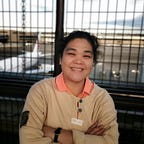The Role of Science and Technology in the Philippine Economy
Written by Dan Napa
Last December 13, 2017, the Makati Business Club, American Chamber of Commerce of the Philippines, Canadian Chamber of Commerce of the Philippines, and the Management Association of the Philippines hosted a joint membership meeting. Invited as guest speaker was Sec. Fortunato dela Peña of the Department of Science and Technology (DOST).
The main agenda for the morning was a discussion and presentation of the activities that the DOST had been spearheading, in accordance with the Duterte administration’s 10-Point Socioeconomic Agenda. When one talks about business, the DOST wouldn’t make it to the top 10 government agencies connected with trade and investment; however, Sec. dela Peña emphasized the importance of science and technology, noting that most, if not all, of the highly developed countries all over the world hold a high regard for science and technology. This prioritization makes the country competitive in innovation and self-sustaining development that will allow the economy to lean on its own production, making international trade an icing on its economic cake.
Research and development activities of the DOST has been at the forefront of initiatives since they are meant to give the country new sources of income and promote sustainable development. Key areas being targeted are health, energy and emerging technologies, disaster risk reduction, and national integrated research agenda. The department values its institutional partners since private firms have the hardware and industry knowledge on research and development. These institutional partners are given incentives when participating in government-funded research. Companies are given right of first refusal for licensing rights and can even have top picks from graduating scholars, who previously worked in their R&D programs. Academic institutions are also key partners in the DOST’s goal of making breakthrough discoveries in the field of R&D. Over 30 academic institutions are registered in Tuklas Lunas Centers as a way of harnessing the collective resources and knowledge of the academe in finding the next medical breakthrough, with the help of the country’s biodiversity. One notable success story related to this is UP Manila’s research on the use of Lagundi leaves as an effective remedy for coughs. To this day, the university is still reaping licensing fees from this research.
Personally, I was surprised to learn about the development of a Philippine Space Program, which is one of DOST’s top priority programs. Recently, the Philippines launched its own micro-satellite, the “DIWATA 1”, and is scheduled to launch the “DIWATA 2” as a follow-up. The department is also in partnership with other countries’ space programs and satellites for visual imaging and weather pattern forecasting. The goal of the space program is to bring the Philippines into the 21st century by developing cutting-edge technologies born out of the challenges of space flight and space observation. This will also have an astounding effect on the improvement of PAGASA’s meteorological technology. One major reason for continuous advancements in the field of meteorological studies is their drive for risk reduction and damage mitigation for natural calamities.
Food security had always been a looming threat, especially for third-world countries such as the Philippines. With over 60 percent of the population living below the poverty line, creating a self-sustaining food ecology and economy is becoming important now more than ever. Post war, the Philippines was one of the best-producing countries in Southeast Asia; however, the Philippines now lags behind the countries like Thailand, Vietnam, and even Cambodia. The DOST’s focus on agriculture, aqua-culture, and forestry programs aim to alleviate the need to import food and increase local yield to satisfy local demand. Sustainable development in this arena will help lower commodity prices and stimulate the local farming economy.
Lastly, in Science and Technology arena, the department is hard at work to increase the number of science and engineering graduates in the country. In partnership with the academe and private institutions, the DOST aims to produce more scholars specializing in science-and-technology-related courses to elevate the level of work being done in the Philippines. As of the moment, 95 percent of manufacturing activities in the Philippines account for fabrication, raw-materials processing, and general manufacturing; R&D activities are mostly diverted to regional plants and rarely to Philippine operations. Creating opportunities and partnerships, where R&D activities are funded or incentivized by the government, will help boost economic activity in the area.
On the surface, the Philippines looks like a tourist destination, with little to offer in terms of commerce — much less for science and technology. The DOST aims to transform this image of the Philippines and leverage its geographical location by making the country a center of scientific activity and excellence. These little projects will add up to bigger and bigger discoveries, which will hopefully, one day, make the Philippines a scientific and technological hub like our neighbors, Japan, South Korea, and China.
Please visit and join the John Clements Talent Community.
About the author:
Dan is currently a supervising sales consultant at the Executive Search and Selection division of John Clements Consultants, Inc.
